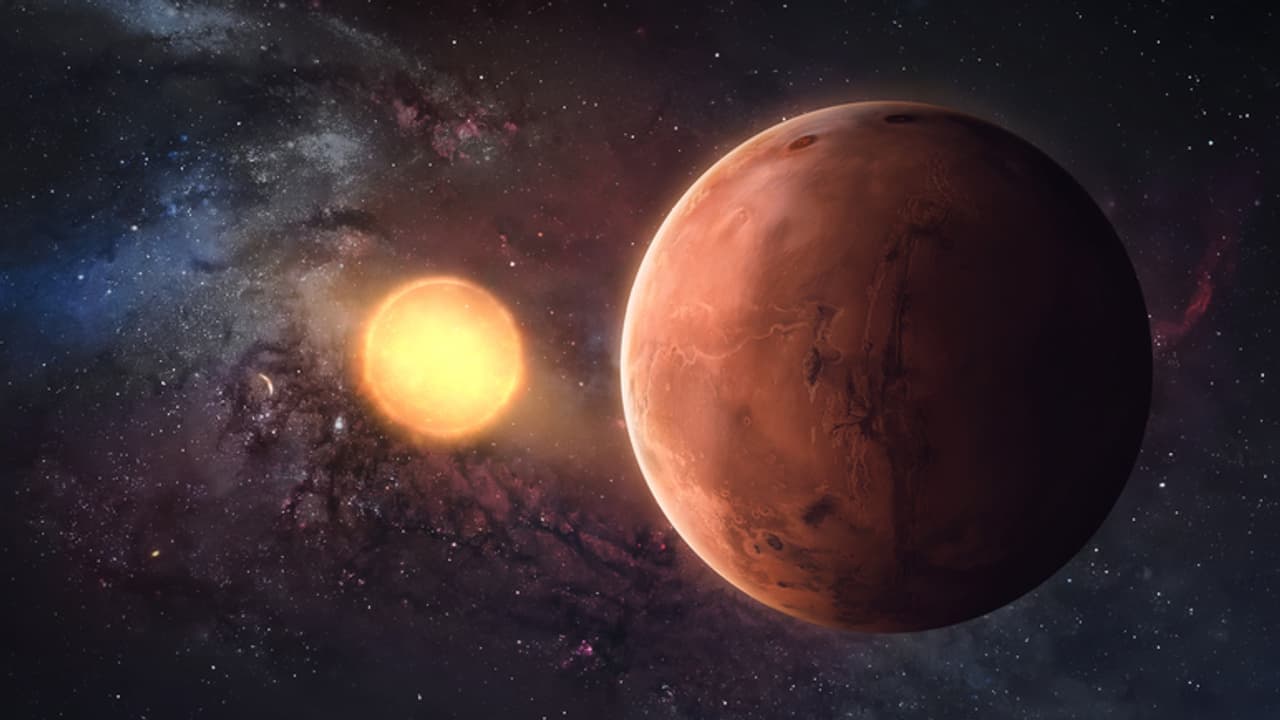New NASA experiments reveal that Mars formed its core much faster than Earth, thanks to molten iron and nickel sulfides seeping through solid rock. This discovery reshapes our understanding of planetary evolution in the early solar system.
Mars may be smaller than Earth, but new research suggests it outpaced our planet when it came to forming its core. Scientists from NASA’s Johnson Space Center have uncovered evidence that Mars’ metallic core formed just a few million years after the birth of the solar system, much faster than Earth’s core, which likely took over a billion years to develop.

This fast-track planetary development, scientists now believe, was made possible by an unusual process involving molten iron and nickel sulfides seeping through solid rock, bypassing the need for the entire interior to be molten.
What is planetary differentiation?
Planets, including Earth and Mars, form in layers, core, mantle, and crust. This structure is the result of a process known as "differentiation," where heavier elements like iron and nickel sink to the center while lighter ones float to the surface. Traditionally, scientists believed that such differentiation only happens when a planet’s interior becomes molten due to heat from radioactive elements like aluminum-26.
This was long thought to be the case for Earth, where internal melting drove the slow separation of elements. But Martian meteorites tell a different story: Mars had a fully formed core within a few million years, far too fast for radioactive decay alone to be responsible.
NASA tests a new theory in the lab
A team led by planetary scientist Sam Crossley conducted groundbreaking high-temperature experiments at NASA’s Experimental Petrology Lab. They heated sulfate-rich rock samples to over 1,020°C, hot enough to melt sulfides but not the surrounding silicates. Using 3D X-ray imaging, they observed molten iron and nickel sulfides percolating through cracks in solid rock.
“We could actually see in full 3D renderings how the sulfide melts were moving,” said Crossley.
This showed for the first time that sulfides could reach a planet’s center and form a core before the planet's interior fully melted.
Verifying the results with real meteorites
To confirm their theory, the team analyzed Martian meteorites, ancient space rocks that offer clues about early planetary processes. By partially melting synthetic sulfides infused with trace platinum-group metals (PGMs) like iridium and platinum, they matched the unique chemical patterns found in oxygen-rich meteorites.
ARES researcher Jake Setera developed a special laser-based method to trace these PGMs without damaging the samples. His results confirmed that the movement of molten sulfides through solid rock left behind specific residues, direct evidence that this process occurred naturally on early Mars.
“This confirmed our hypothesis,” said Crossley. “These dense melts would migrate to the center of a body and form a core, even before the surrounding rock began to melt.”
What this means for Mars and other planets
This new model not only explains Mars’ unusually fast core formation, but it also has implications for other planets that formed in the middle zone of the early solar system’s protoplanetary disk. Mars, it turns out, may have been in the perfect spot, rich in iron, nickel, oxygen, and sulfur.
The finding also suggests that Mars’ core is likely rich in sulfur, which famously smells like rotten eggs, a surprising detail that adds a vivid touch to our understanding of the planet’s inner structure.
Published in Nature Communications on April 4, this research helps answer a long-standing mystery about how Mars evolved so quickly. It also provides a new lens through which scientists can study the formation of other rocky worlds in our solar system and beyond.


